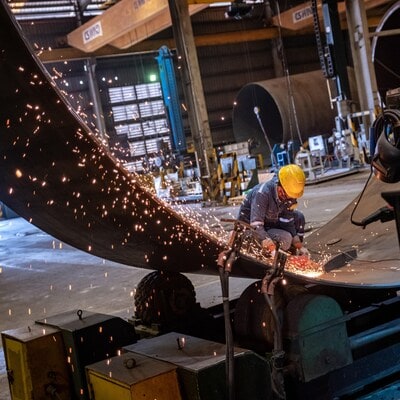[ad_1]
)
India needs to address the four cost-related components – labour, rate material, energy and financial costs. (Photo: Bloomberg)
Strategic reforms are needed to enhance India’s appeal to global investors as despite having huge potential, FDI data shows that the country has not fully capitalised on its opportunities, think tank GTRI said on Thursday.
Suggesting a four-step plan, the Global Trade Research Initiative (GTRI) said that measures which can help India position itself as a leading choice for foreign investors include reducing cost disadvantages for companies relocating to India, improving the Ease of Doing Business throughout the business lifecycle, and establishing a framework for evaluating investment proposals.
India attracted $44.4 billion in FDI (foreign direct investment) in FY2024, which is only 1.1 per cent of its GDP.
The country lagged significantly behind countries like China ($189.1 billion), Brazil ($86.1 billion) , Australia ($61.6 billion), and Canada ($52.6
billion) as noted in the World Development Report 2023, it said.
It suggested that India must offer a more competitive cost structure to attract businesses shifting from China or considering alternative production locations.
For this, India needs to address the four cost-related components – labour, rate material, energy and financial costs.
“In India, raw material costs are higher for non-traditional productions due to import dependence and high tariffs. China benefits from lower costs due to large-scale local production and efficient supply chains, while Vietnam offers competitive costs with low or zero tariffs on imports,” GTRI Founder Ajay Srivastava said.
He said that the financial costs in India are the highest, with lending rates around 9-10 per cent, while China enjoys lower interest rates at 4-5 per cent, and Vietnam’s rates are moderate at 7-8 per cent.
“India needs to address these costs and strive to be the most cost-effective option,” Srivastava added.
To further improve the ease of doing business, the GTRI suggested the identification of priority sectors, particularly those where India’s manufacturing and export capabilities are currently weak, such as electronics, computers, telecom, precision equipment, and factory machinery.
Secondly, invite top global firms as anchor manufacturers. These firms can drive technological innovation and improve productivity across sectors.
“Additionally, there is a need to ensure quick factory-to-ship movement. Improving logistics through dedicated freight corridors and strategically locating industrial zones near ports will streamline port and customs processes, facilitating faster shipments,” it added.
Recommending to create a framework for evaluating investment proposals, it said investments involving technology transfer must be assessed for their potential to enhance local technological capabilities, especially in high-tech areas where India aims to close gaps.
(Only the headline and picture of this report may have been reworked by the Business Standard staff; the rest of the content is auto-generated from a syndicated feed.)
First Published: Aug 01 2024 | 1:08 PM IS
[ad_2]
Source link

